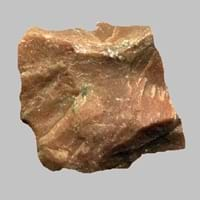Lignite and Rhyolite
Definition
Definition
Lignite is a soft brownish coal which shows traces of plants and is intermediate between bituminous coal and peat
Rhyolite is a fine-grained igneous rock which is rich in silica
History
Origin
France
North America
Discoverer
Unknown
Ferdinand von Richthofen
Etymology
From French, Latin lignum wood + -ite1
From German Rhyolit, from Greek rhuax lava stream + lithos stone
Class
Sedimentary Rocks
Igneous Rocks
Sub-Class
Durable Rock, Soft Rock
Durable Rock, Hard Rock
Family
Group
Not Applicable
Volcanic
Other Categories
Coarse Grained Rock, Fine Grained Rock, Medium Grained Rock, Opaque Rock
Coarse Grained Rock, Opaque Rock
Texture
Texture
Amorphous, Glassy
Aphanitic, Glassy, Porphyritic
Color
Black, Brown, Dark Brown, Grey, Light to Dark Grey
Grey, White, Light Black
Maintenance
Less
More
Durability
Durable
Durable
Water Resistant
No
Yes
Scratch Resistant
No
Yes
Stain Resistant
No
Yes
Wind Resistant
No
Yes
Acid Resistant
No
Yes
Appearance
Veined or Pebbled
Banded
Uses
Architecture
Interior Uses
Not Yet Used
Decorative Aggregates, Homes, Hotels, Interior Decoration, Kitchens
Exterior Uses
Not Yet Used
As Building Stone, As Facing Stone, Paving Stone, Office Buildings
Other Architectural Uses
Not Yet Used
Not Yet Used
Industry
Construction Industry
for Road Aggregate, Steel Production
Arrowheads, As Dimension Stone, Building houses or walls, Construction Aggregate, Cutting Tool, for Road Aggregate, Knives
Medical Industry
Not Yet Used
Not Yet Used
Antiquity Uses
Not Yet Used
Artifacts
Other Uses
Commercial Uses
Electricity Generation
Gemstone, Laboratory bench tops, Jewelry
Types
Types
Xyloid Lignite or Fossil Wood and Compact Lignite or Perfect Lignite
Pumice Rocks, Obsidian Rocks, Perlite Rocks, Porphyritic Rocks.
Features
Generally rough to touch, Helps in production of Heat and Electricity, Used as fossil fuel
Acidic in nature, Available in lots of colors
Archaeological Significance
Monuments
Not Yet Used
Not Yet Used
Famous Monuments
Not Applicable
Not Applicable
Sculpture
Not Yet Used
Not Yet Used
Famous Sculptures
Not Applicable
Not Applicable
Pictographs
Used
Not Used
Petroglyphs
Used
Not Used
Figurines
Not Yet Used
Not Yet Used
Fossils
Present
Absent
Formation
Formation
Coal formation takes place due to accumulation of plant debris in a swamp environment. The Coal formation process continues, as peat turns into lignite brown or black coal at increasing heat and pressure.
Rhyolite is a felsic extrusive rock and due to its high silica content, rhyolite lava is very viscous and is volcanic equivalent of granite.
Composition
Mineral Content
Not Available
Biotite, Feldspar, Hornblade, Plagioclase, Pyroxene, Quartz
Compound Content
Carbon, Hydrogen, Nitrogen, Oxygen, Sulphur
Ca, Fe, Potassium Oxide, Mg, Potassium, Silicon Dioxide, Sodium
Transformation
Metamorphism
No
Yes
Types of Metamorphism
Not Applicable
Burial Metamorphism, Cataclastic Metamorphism, Regional Metamorphism
Weathering
Yes
Yes
Types of Weathering
Biological Weathering, Chemical Weathering, Mechanical Weathering
Biological Weathering, Chemical Weathering, Mechanical Weathering
Erosion
Yes
Yes
Types of Erosion
Chemical Erosion, Water Erosion, Wind Erosion
Chemical Erosion, Sea Erosion, Water Erosion, Wind Erosion
Properties
Physical Properties
Hardness
1
6-7
Grain Size
Medium to Fine Coarse Grained
Large and Coarse Grained
Fracture
Conchoidal
Sub-conchoidal
Streak
Black
Colorless
Porosity
Highly Porous
Highly Porous
Luster
Dull to Vitreous to Submetallic
Earthy
Compressive Strength
Not Available
140.00 N/mm2
15
Cleavage
Non-Existent
Not Available
Toughness
Not Available
2
Specific Gravity
1.1-1.4
2.65-2.67
Transparency
Opaque
Opaque
Density
800-801 g/cm3
2.4-2.6 g/cm3
Thermal Properties
Specific Heat Capacity
1.26 kJ/Kg K
5
Not Available
Resistance
Heat Resistant
Heat Resistant, Wear Resistant
Reserves
Deposits in Eastern Continents
Asia
Bangladesh, Burma, Cambodia, China, India, Indonesia, Kazakhstan, Malaysia, Mongolia, Pakistan, Turkey, Vietnam
China, India
Africa
Botswana, Kenya, Morocco, Mozambique, South Africa, Tanzania
Angola, Egypt, Madagascar, Namibia, Nigeria, South Africa
Europe
Belgium, Bulgaria, England, France, Germany, Greece, Hungary, Kosovo, Netherlands, Norway, Poland, Romania, Serbia, Slovakia, Slovenia, The Czech Republic, Ukraine, United Kingdom
Germany, Iceland, Ireland, Italy, Spain
Others
Not Yet Found
Not Yet Found
Deposits in Western Continents
North America
Canada, Mexico, USA
Canada, USA
South America
Brazil, Chile, Colombia, Venezuela
Argentina, Bolivia, Chile, Colombia, Ecuador, Peru, Venezuela
Deposits in Oceania Continent
Australia
New South Wales, Queensland, Victoria
New Zealand, Queensland, Western Australia
All about Lignite and Rhyolite Properties
Know all about Lignite and Rhyolite properties here. All properties of rocks are important as they define the type of rock and its application. Lignite belongs to Sedimentary Rocks while Rhyolite belongs to Igneous Rocks.Texture of Lignite is Amorphous, Glassy whereas that of Rhyolite is Aphanitic, Glassy, Porphyritic. Lignite appears Veined or Pebbled and Rhyolite appears Banded. The luster of Lignite is dull to vitreous to submetallic while that of Rhyolite is earthy. Lignite is available in black, brown, dark brown, grey, light to dark grey colors whereas Rhyolite is available in grey, white, light black colors. The commercial uses of Lignite are electricity generation and that of Rhyolite are gemstone, laboratory bench tops, jewelry.
|
||
|
||
|










